How the Tower Bridge was built
Categories: Design and Architecture | History
By Pictolic https://pictolic.com/article/how-the-tower-bridge-was-built1.htmlTower Bridge is the most famous bridge in London and one of the symbols not only of the city, but, perhaps, of the whole of England. With its Gothic towers, it has an unusual, easily remembered and recognizable appearance. Looking at such objects, you are always amazed at how they were built in those distant times… This time we have the opportunity to watch the process.
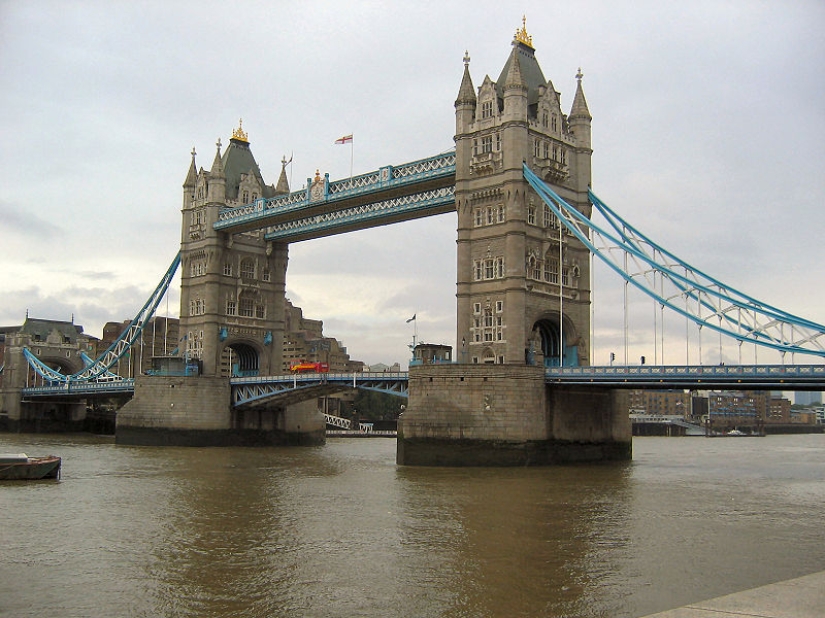

Amazing photos depicting the process of building the Tower Bridge were unexpectedly found... in a dumpster.
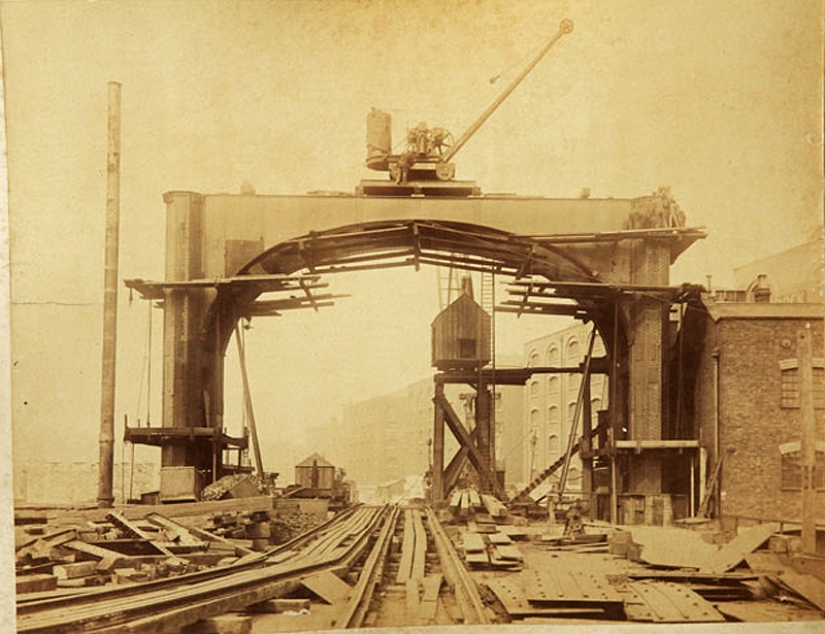
Fifty sepia-colored photographs dating back to 1892 captured the Tower Bridge under construction, one of the main attractions of Great Britain.
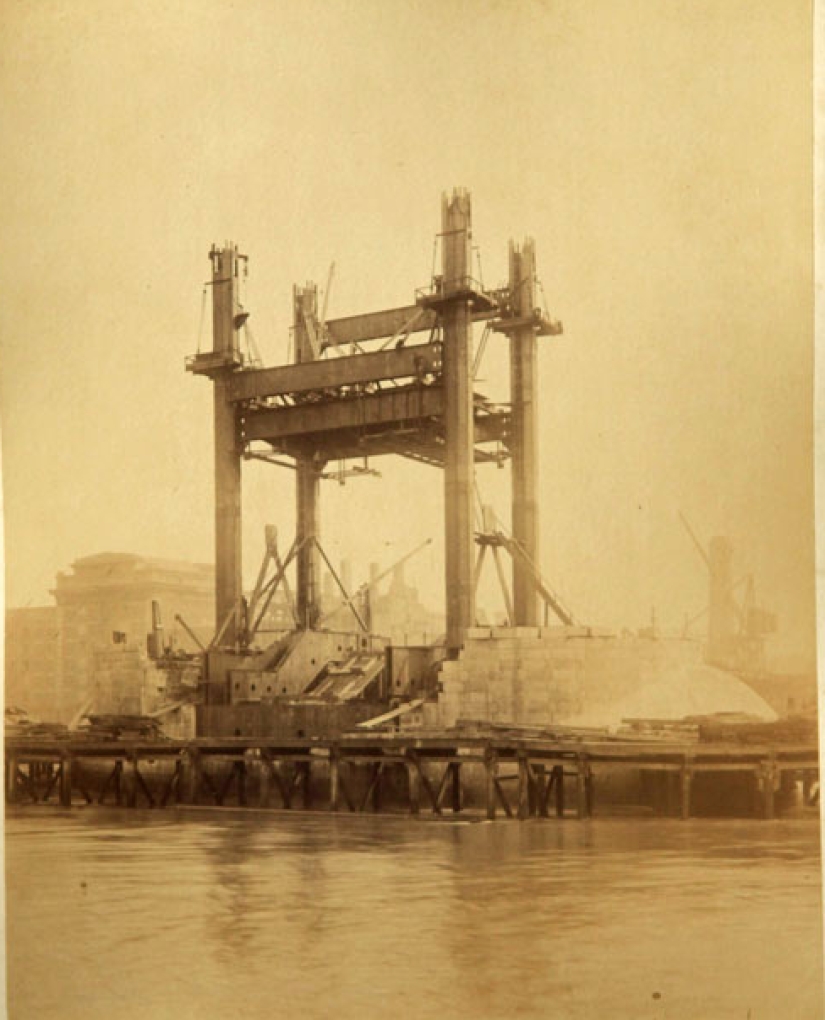
For the past five years, the photos have been lying in a suitcase under the bed of a Westminster resident who wished to remain anonymous, who found them in a dumpster during the demolition of one of the buildings. In addition to the photo, he found several accounting books. The man says that he took the books to the Tower Bridge Museum and tried to tell the employees that he also had photos, but they didn't even want to listen to him, saying that they already had more than enough photos. The man admits that he simply did not know what to do with the photos — and therefore put them in a suitcase and put it under the bed.

So they would have been lying there, if one day the owner of an unusual find had not decided to tell his neighbor Peter Berthoud, who works as a tour guide in Westminster, about the photos. Peter remembers that he couldn't believe his own eyes when he saw the unique photos. He spent several days studying albums and documents, trying to find out if these photos were known to specialists — and found that no one even suspected their existence!
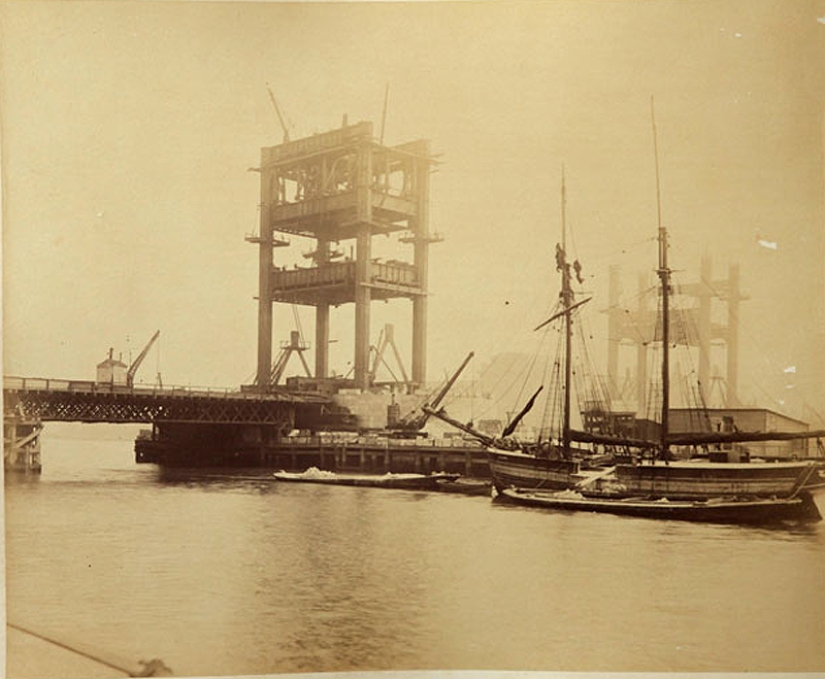
Tower Bridge is the lowest bridge located in the course of the Thames (it is the first to be found if you climb it from the North Sea) and the only one of all bridges that is movable.
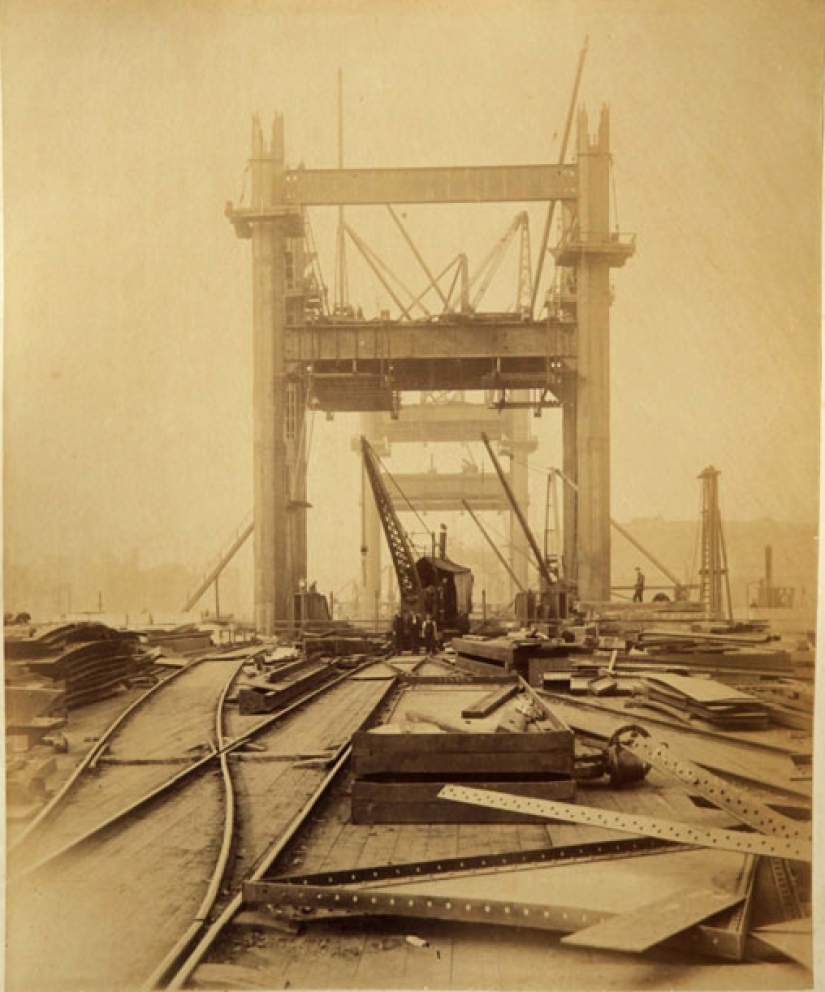
The photographs show the steel base of the bridge, the existence of which many do not even guess — because the outer part of the bridge is lined with stone. The architect of the bridge was Horace Jones, who was succeeded by John Wolf-Barry after his death. It was he who insisted that the bridge be lined with stone.
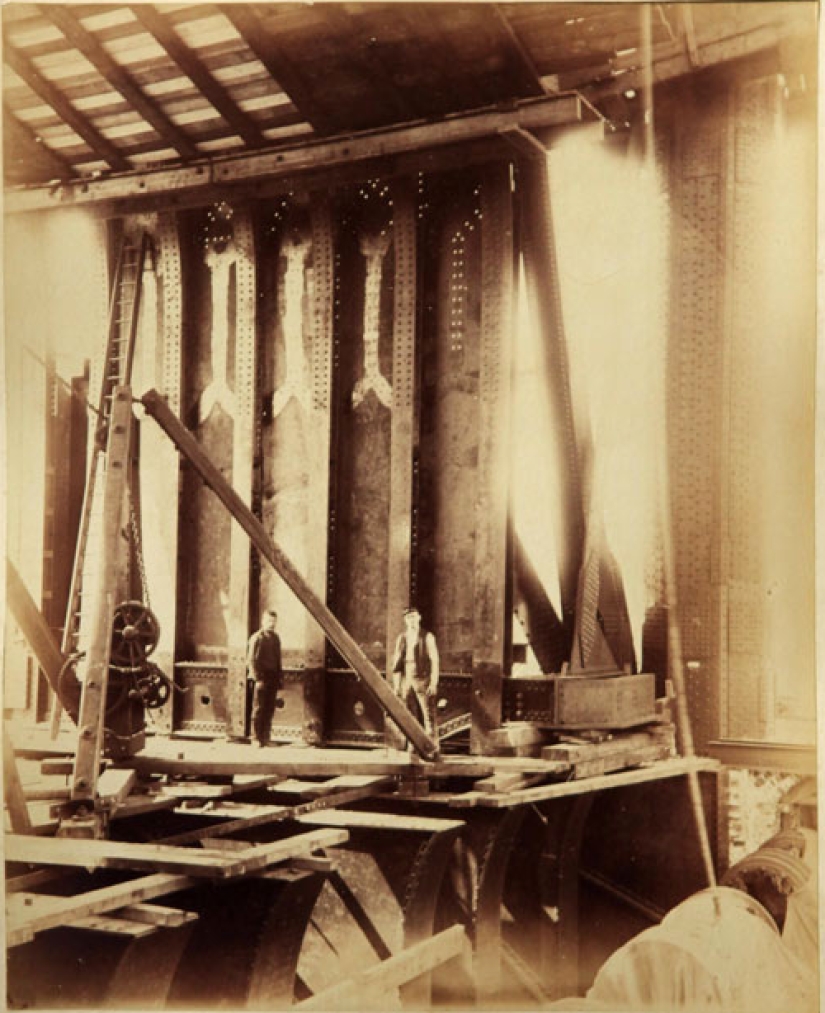
Peter Berthoud calls this photo his favorite. "These people didn't even realize that they were erecting an architectural monument," he says.
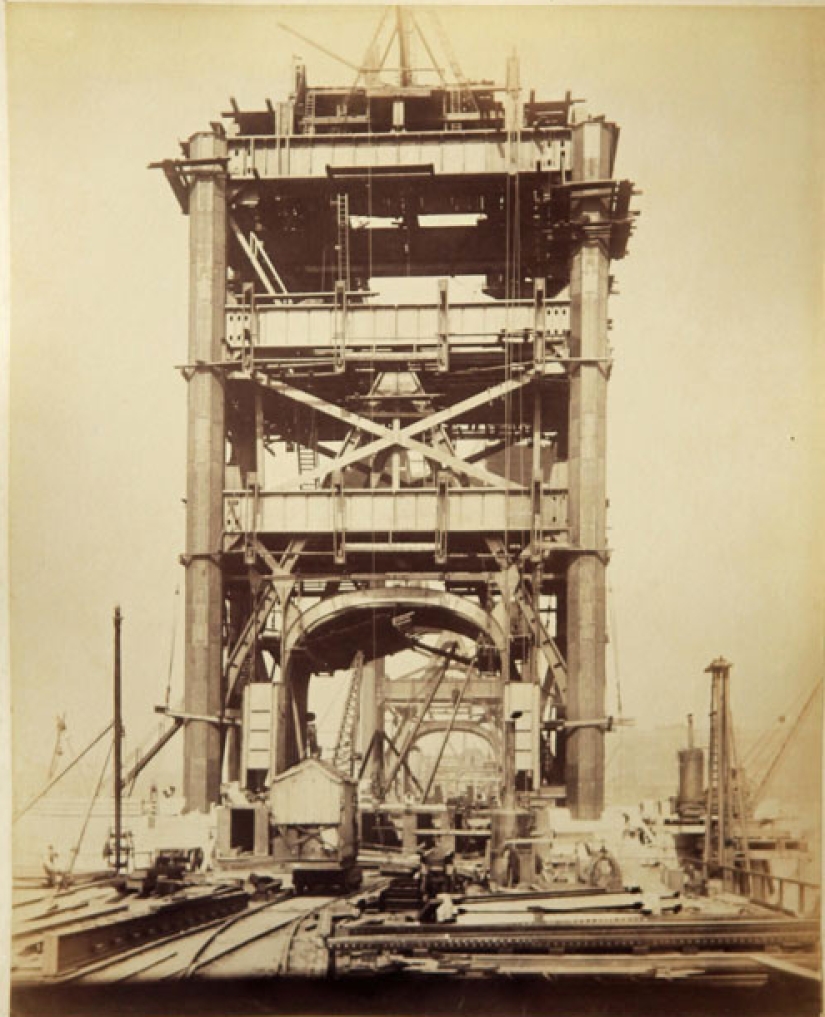
The construction of the Tower Bridge began in 1886 and was completed 8 years later. The grand opening of the new bridge took place on June 30, 1894 by Prince Edward of Wales and his wife Princess Alexandra.
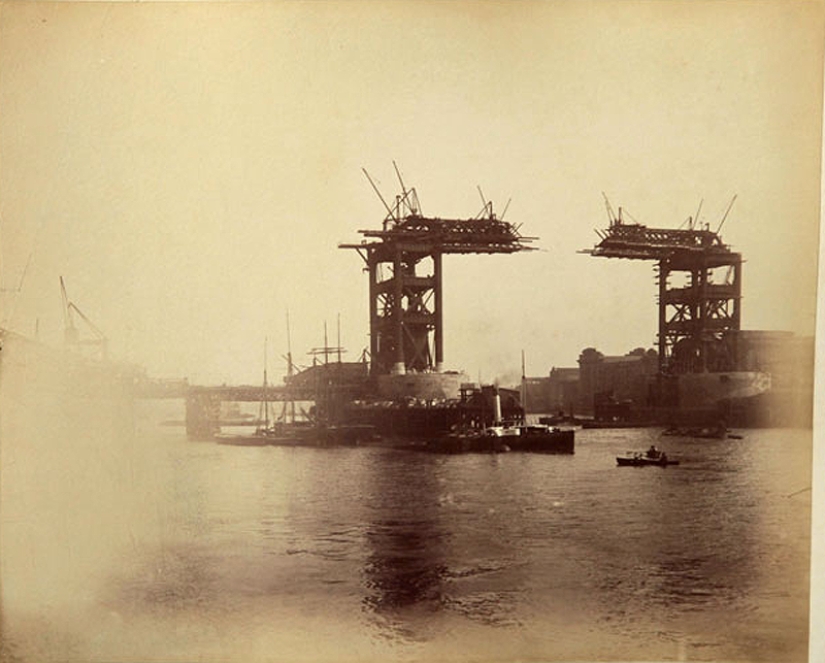
The bridge acquired its modern appearance in 1977 — before that, from the moment of its opening, it was all chocolate-colored. The bridge was repainted in national colors in honor of the 50th anniversary of Queen Elizabeth II.
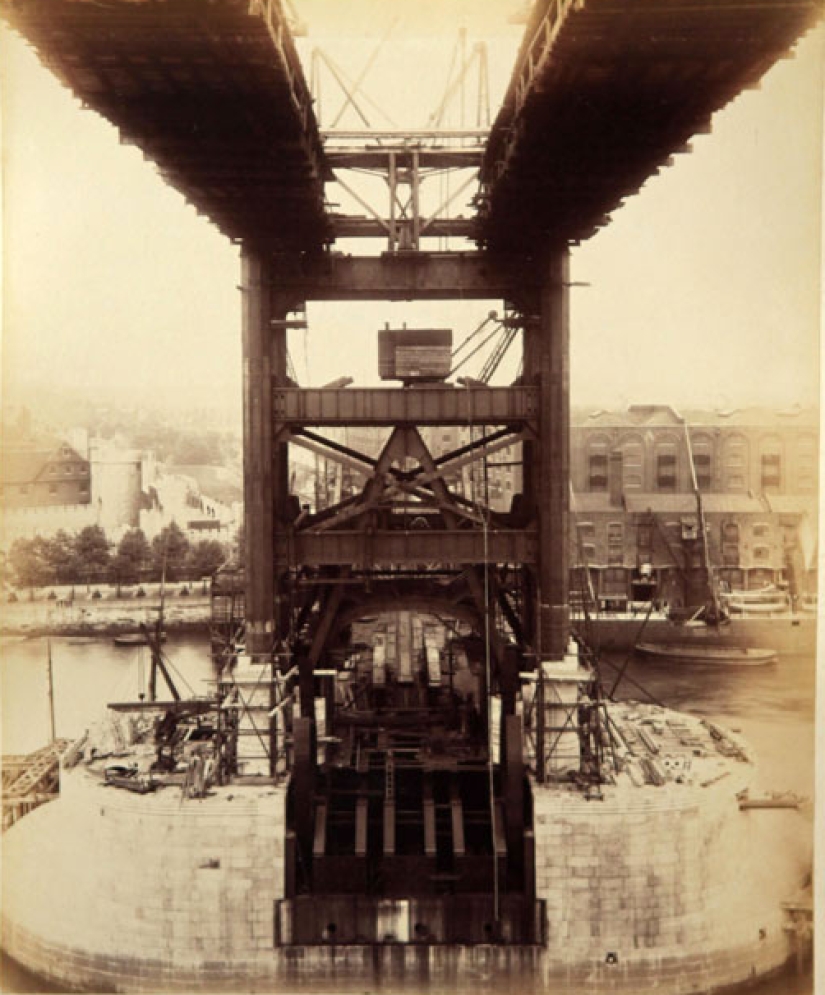
The bridge got its name due to its proximity to the Tower: the northern end of the bridge is located near the south-eastern corner of the Tower, and parallel to the eastern wall of the Tower there is a road that is a continuation of the Tower Bridge.
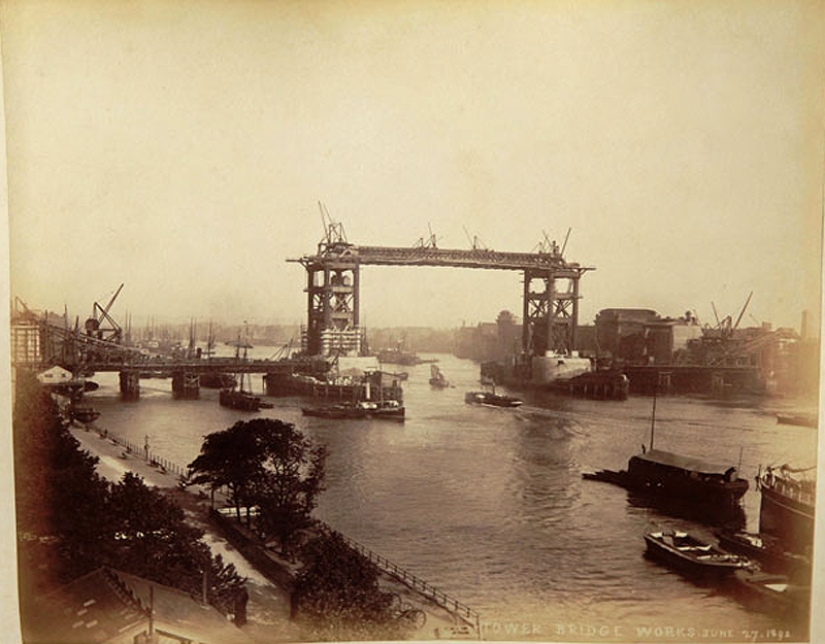
The decision to build the bridge was made in connection with the development of the East End of London — its residents became uncomfortable to move to the other side of the Thames. Built in 1870, the tunnel under the Thames Tower Subway was intended only for pedestrians and only partially solved the problem.
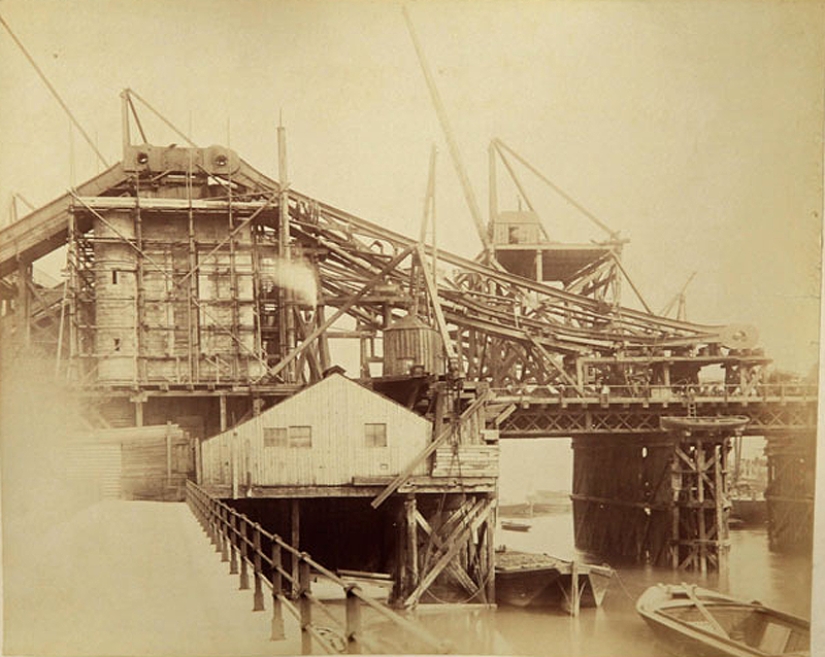
The drawbridges of the bridge are lifted by a hydraulic mechanism located at the base of the towers. At first, its engines were steam-powered. The bridge was built in just a couple of minutes, while its trusses rose 86 degrees, that is, they stood almost vertically. The same mechanism operated elevators that lifted pedestrians to high-rise galleries and signals that controlled traffic on the bridge. In 1976, the hydraulic system, originally water-powered, became oil-powered and was electrified.
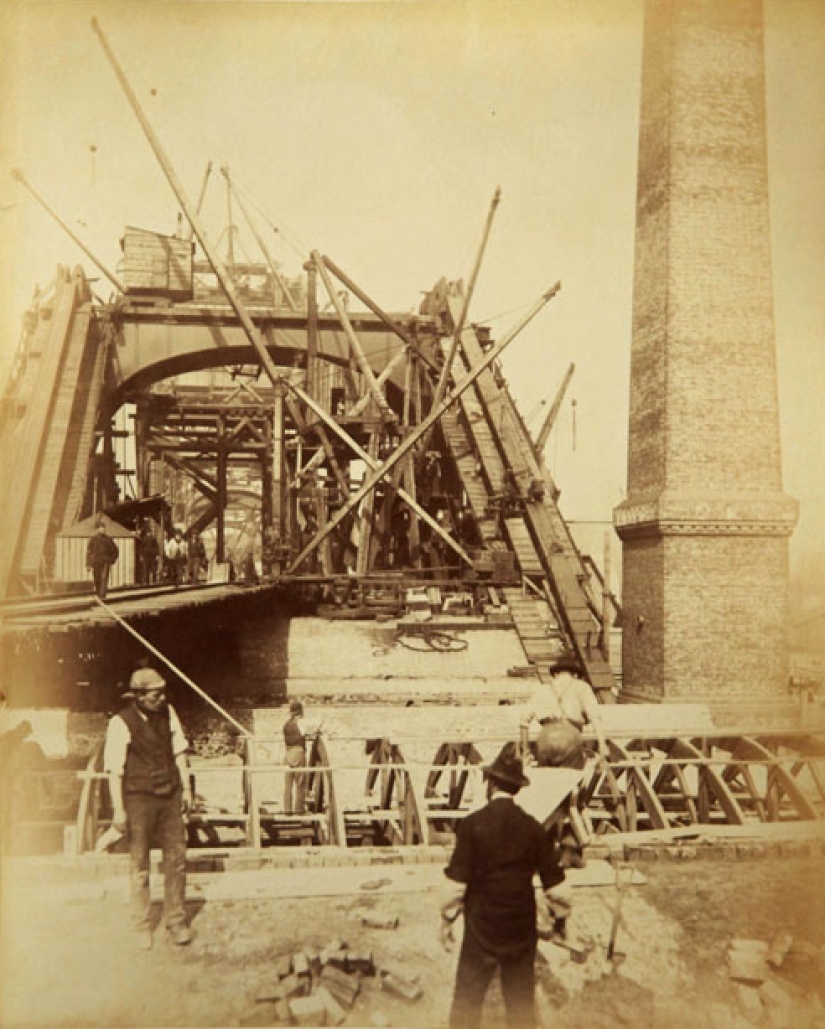
The bridge was not built according to schedule, but every time a ship had to pass under it. Currently, there is a schedule, but it is not regular — it is drawn up for several months in advance at the request of large ships that must pass under the bridge to the London Pool or back.

Pedestrian galleries at a height of 45 meters above the water were conceived so that people could cross the bridge even while lifting the spans. People climbed up the spiral staircases and elevators located inside the towers. However, already in 1910, the galleries were closed by a decision of Parliament, as they became a haven for prostitutes and pickpockets. Decent pedestrians did not particularly strive to climb them, preferring to wait until the bridge was divorced and brought back.
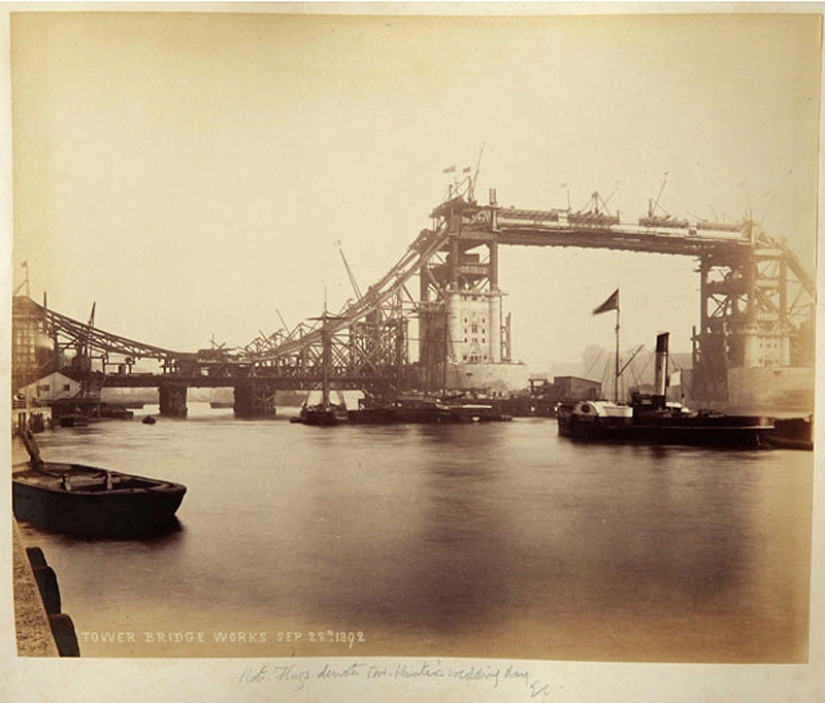
Since 1982, the galleries have been reopened, but already as part of the Bridge Museum and an observation deck.
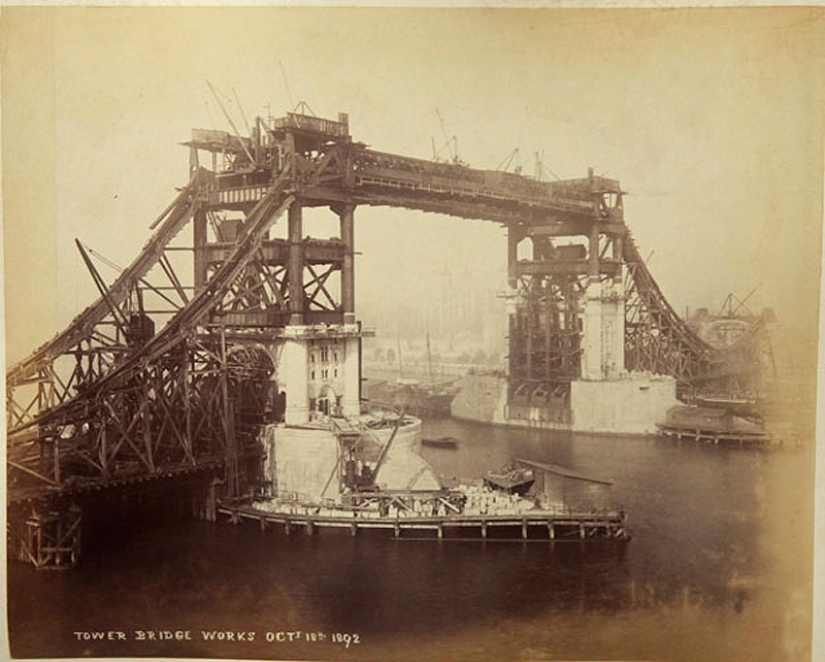
Inside the bridge there is a museum dedicated to its history. In it you can see the real, but not currently operating mechanisms that control the movement of the spans.
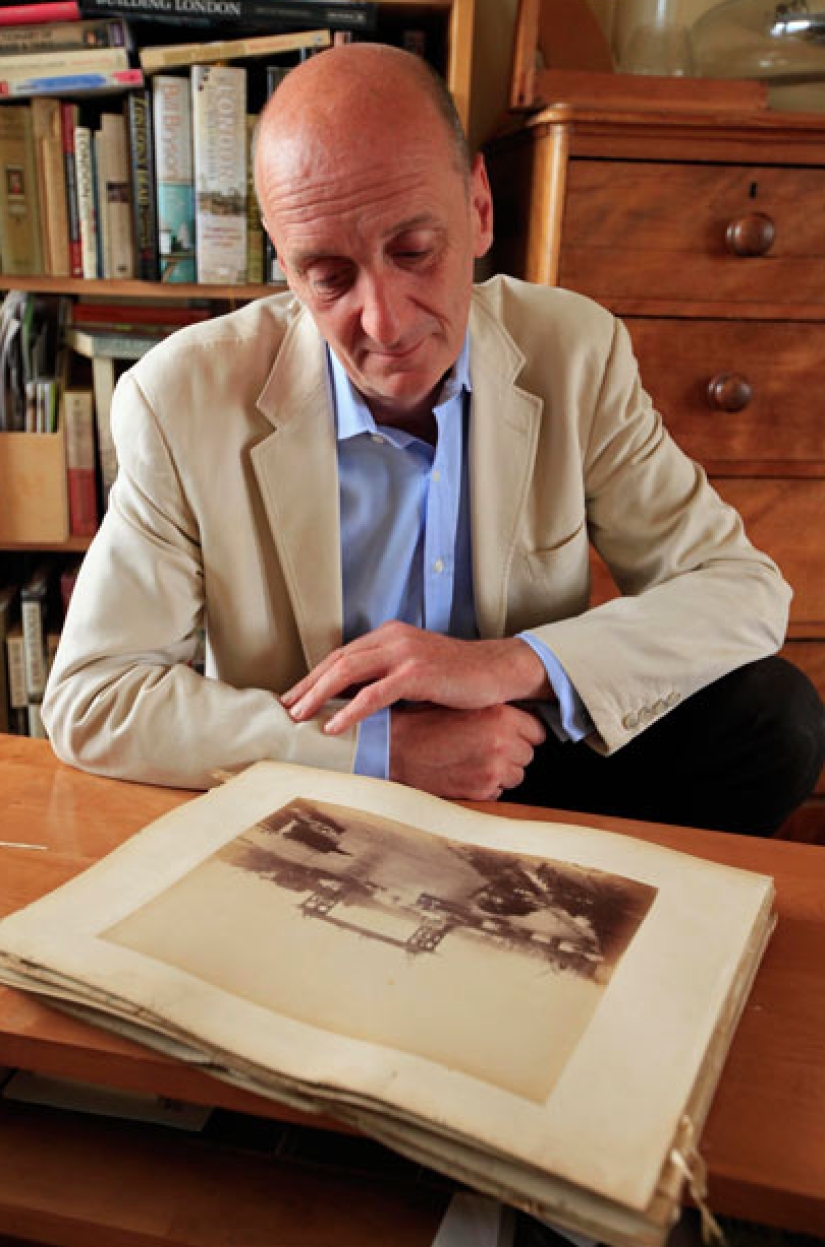
Peter Berthoud with photos of Tower Bridge at his home in London.
Keywords: England | London | Bridge | Construction
Post News ArticleRecent articles

Twitter user @FactBuffet collects interesting facts about everything. Today we bring to your attention another series of facts that ...

Aomori Prefecture in the north of the Japanese island of Honshu is an agricultural region famous for its delicious apples. In ...
Related articles

In the Victorian era Britain was quickly urbanized. By 1851 it became the first country lived in cities of more people than in the ...

Walking through this picturesque bridges, you can admire the views from these stunning views and breathtaking landscapes. We invite ...

Inspired by the observations of the countryside around Epping in Essex, where she grew up, Jill Barklem came up with a series of ...

Imagine a baby vampire or a tiny zombie with glass eyes ... An artist from the USA Bean Shanine specializes in creating such ...